Despite their many differences, Gen Z and Millenials have much in common. They are a growing part of your customer base, and they really despise making appointments over the phone. But even generational preferences aside, there is no denying that an online appointment scheduling feature benefits any service business. If you already use one, but it does not deliver enough conversions, the fault may lie at the UX design or development level. Which means it can be fixed.
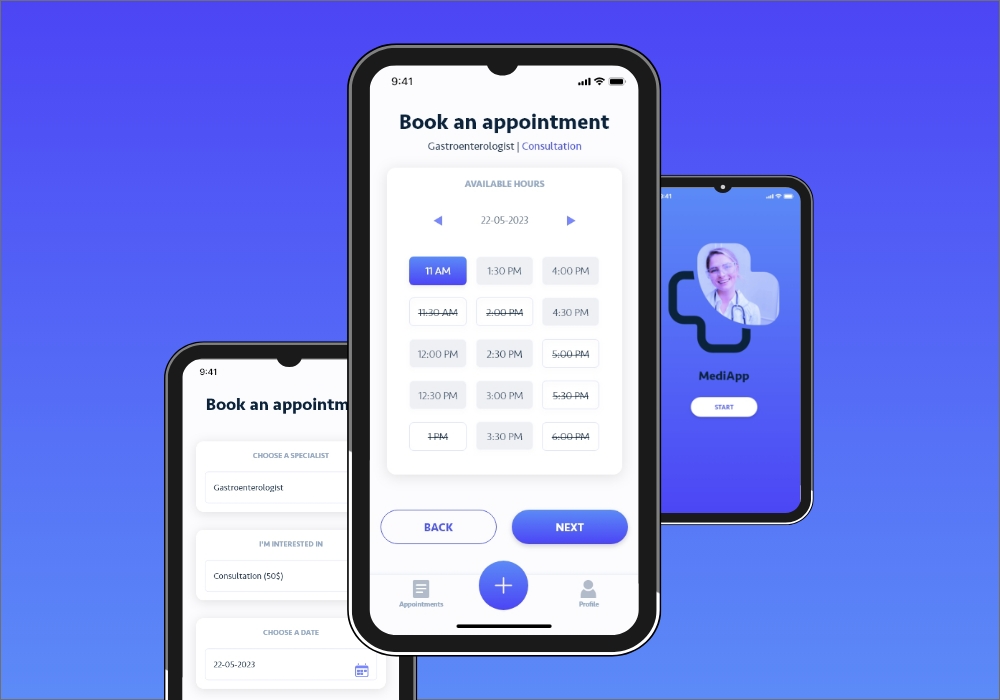
Imagine that you make an appointment over the phone for a routine medical examination, such as an X-ray, at a well-known diagnostic company located in a brand-new skyscraper in a large city. Following the X-ray, you discover that the cost is double what you were initially quoted over the phone, as your doctor's referral necessitated additional images beyond what the standard service includes. Irritating, right? It happened to the author of this post. Not in 2002, but last week. And it wouldn't happen if the company had a better understanding of user experience and implemented online appointment booking with a detailed description of services and online payments.
Almost any business can utilize online scheduling features, from beauty salons to fitness centers. However, the medical industry, which necessitates the utmost attention to detail and safety in its designs, frequently overlooks this crucial aspect of its digital existence. Our agency has a lot of experience developing and troubleshooting booking widgets and building medical applications, so we are happy to share a handful of observations and tips.
Click-through rate
This one is a little obvious. While comprehensive information regarding the service the client is buying holds significance, it's essential to recognize that numerous users visit your website or launch your app with the sole purpose of scheduling an appointment. Getting to this feature should take 1-2 clicks at most.
Certainly, incorporating a button that leads to the booking page on service description pages makes sense. However, it's important to avoid making it the primary user pathway. Don't make people get through a wall of content before letting them schedule an appointment.
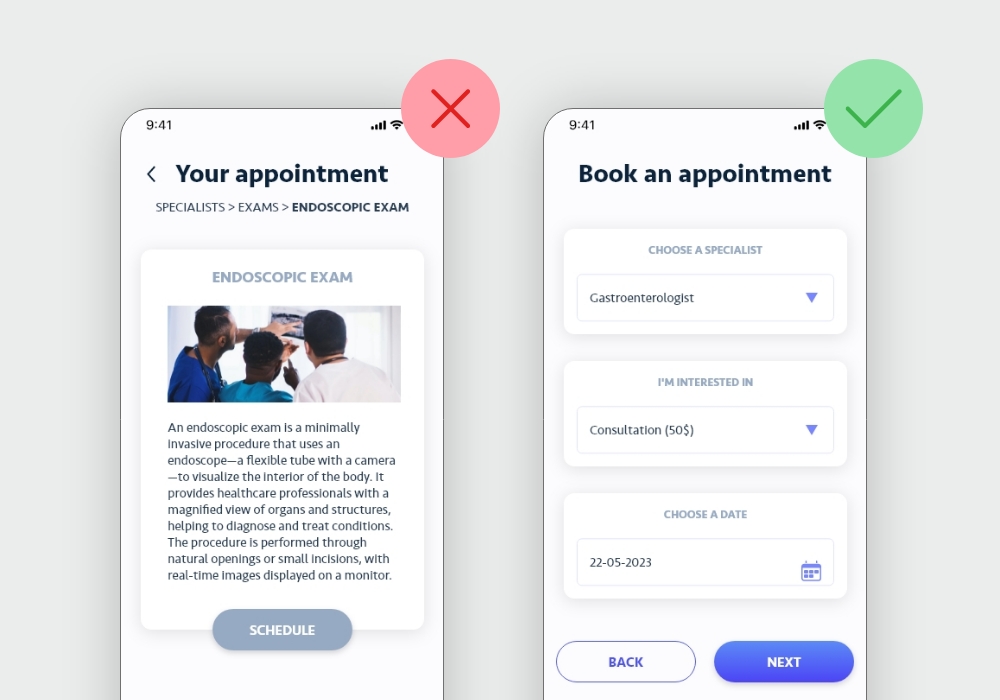
Show all the hours
Many appointment booking apps only show available appointments. From a utilitarian point of view, this makes sense. It's just that people like to see the bigger picture. Check the opening hours of your facility and how popular it is. So displaying all working hours and highlighting the available ones will work better. Trust us.
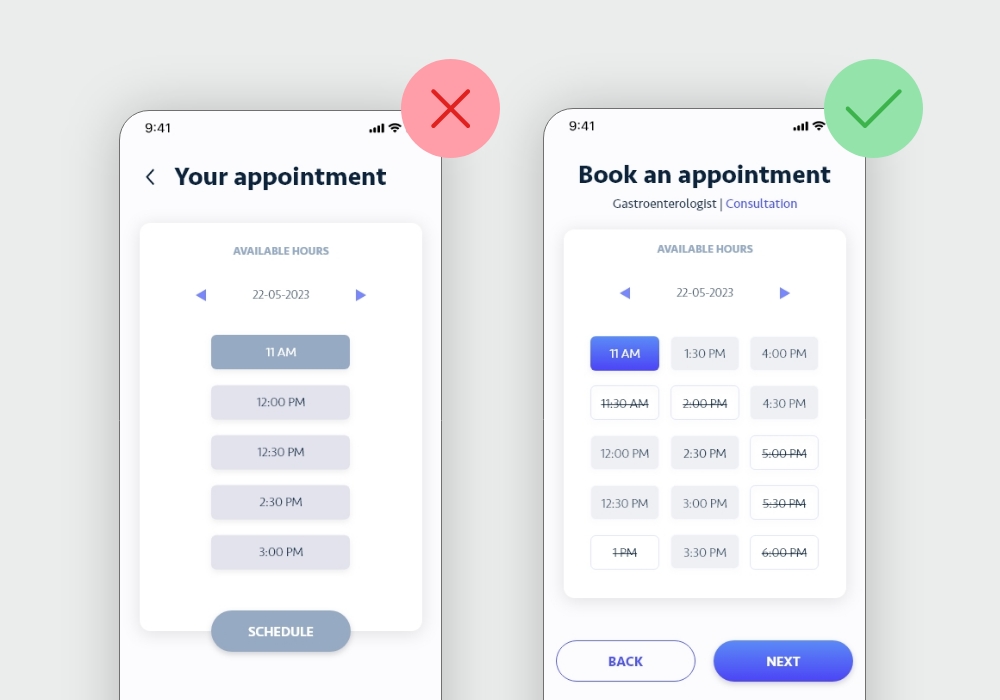
User information
The booking data should not strictly relate to the user's account data. People want to be able to make appointments for their close ones, including children. And it would be best if you allowed them.
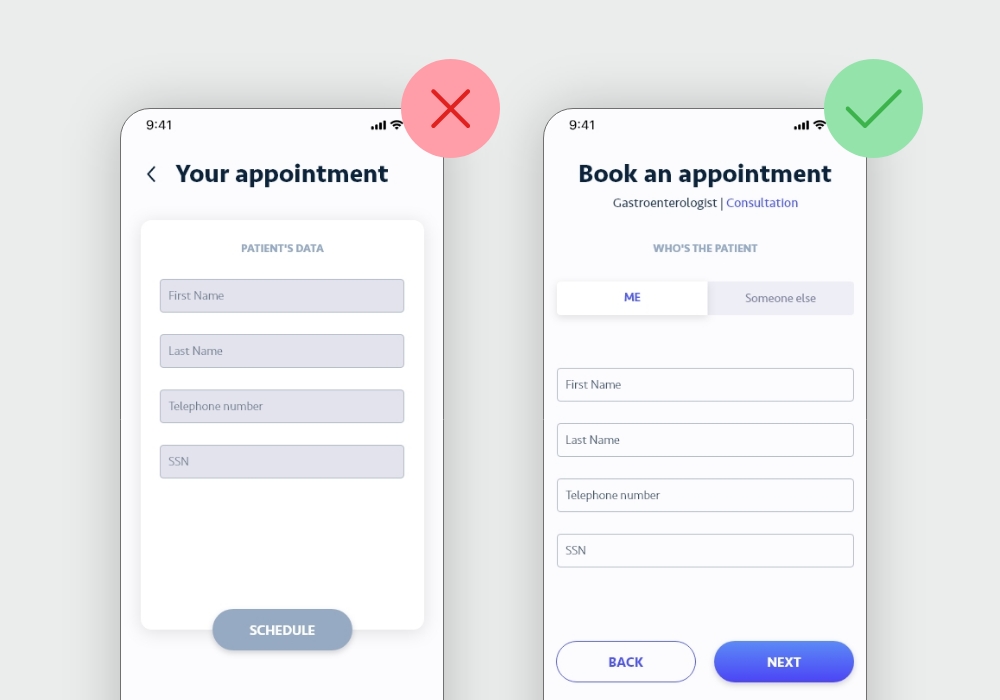
Payment management
After going through a lengthy form, nothing is more frustrating than realizing that payment for the service is limited to PayPal or another system we are unfamiliar with or do not use. So if you can't integrate more than one trustworthy payment gateway with your platform, don't even bother with booking features.
Limited integration options with payment gateways can be an issue for some basic content management systems, so it is worth investing in a flexible digital experience platform like Umbraco or Kentico right away.
Overview of all the information
After closing the door, do you ever find yourself going back to your apartment just to make sure you actually turned off the iron? This might be a symptom of OCD, but we should also allow users to ensure they did everything right before clicking SUBMIT.
Before proceeding to the payment, the client or patient should be able to verify all the data provided in the form and make any changes without having to go back a few pages or refresh the entire subpage.
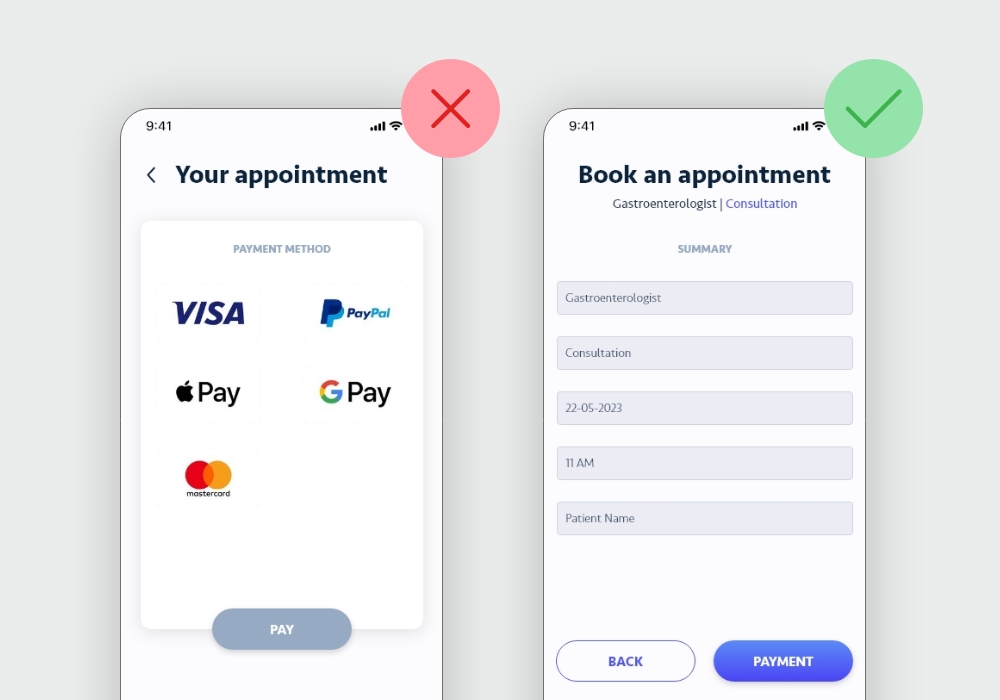
Canceling and rescheduling
It should be as simple and obvious as the scheduling appointments option itself. Don't hide it unless you want to quickly turn the user away from your website/app or your entire business.
Open slots notifications
Afraid of last-minute cancellations and free time slots between appointments? Do yourself and the user a favor by adding "Notify me when this becomes available" for booked appointments.
By implementing this approach, in the event of an appointment cancellation, users will receive a notification indicating the availability of the time slot once again. As a result, you can continue offering appointment cancellations, which holds significant value for many customers, while enhancing the likelihood of swiftly filling any vacant time slots.
Features for your employees
When designing a website or application, it's important to consider the convenience of both users and employees. Choosing the right system is crucial in ensuring smooth customer service and efficient information administration. Consider the development of these features when making your selection.
a) Different roles and permission levels
Obviously, not all employees should have unrestricted access to all the information stored in a scheduling app. To address this, it's advisable to establish distinct user profiles for various employee roles, such as admins, senior employees, assistants, viewers, and more. This approach ensures that each employee has the appropriate access and privileges within the app, promoting efficiency and maintaining data security.
b) Calendar syncing
Any recorded information about a doctor or specialist's vacation or unavailability within your facility should be promptly communicated to the application. This ensures that unavailable dates are swiftly updated and no longer visible to customers.
If possible, you can also add the option to automatically reassign already scheduled appointments to a different specialist with similar skills.
c) Manual input
A customer may call to change the details of an online appointment. It is important that your employees with the right level of permissions can quickly and conveniently make changes to the calendar manually, e.g., from the interface on the phone.
d) CRM integrations
By integrating your appointment scheduling widget or app with a Customer Relationship Management (CRM) system, users can be efficiently located, registered, and contacted to receive notifications about relevant updates and developments. CRM systems are capable of gathering and analyzing customer data, including purchase history, location, preferred communication channels, and contact information. This valuable information is then utilized for marketing purposes.
We have unique experience in creating custom integrations and digital solutions, including for the medical industry. Most of these UX and development tips can be summed up in the phrase "Mind the customer journey." Instead of merely hoping that clients will find you if they are interested, guide and facilitate their journey by strategically placing signposts in the direction they want to go.
